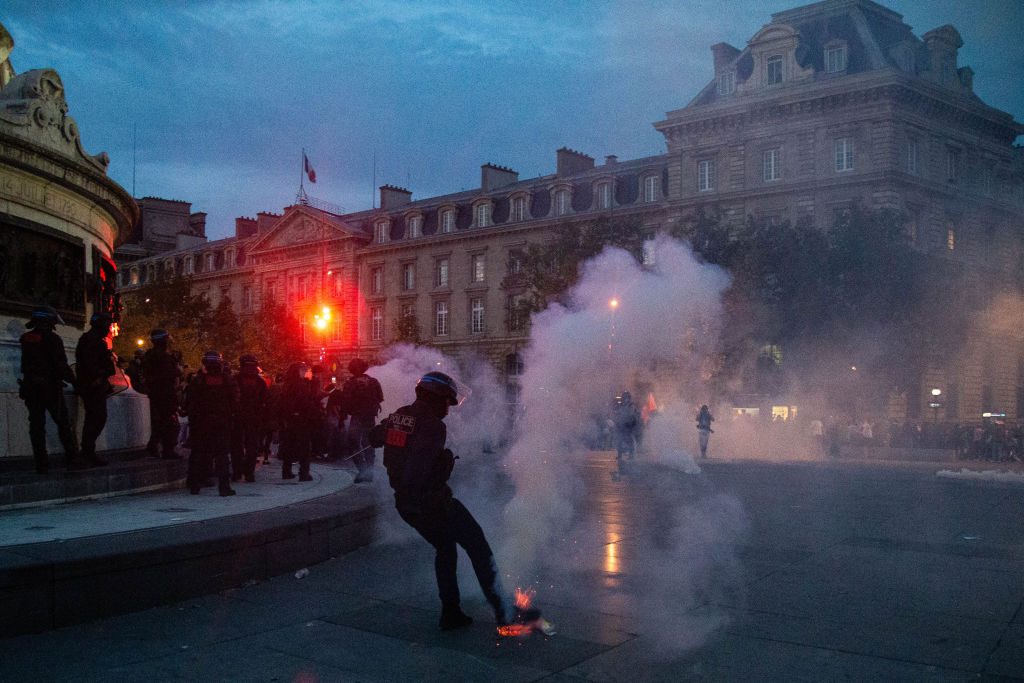The fight isn’t about the Left versus the Right; it’s the Left versus the West.
These Are Not Your Drones

The U.S. needs to support domestic drone production.
A growing concern in debates over U.S.-China competition and decoupling has been the U.S. usage of Chinese drones. Drones made in China by Chinese companies have been used by federal agencies for tasks ranging from fighting fires to agricultural research and by the FBI and Secret Service for security purposes. As a fiery congressional hearing last summer illustrated, lawmakers are finally beginning to question the wisdom of using Chinese drones.
To understand why these drones are so controversial, we need to understand how one company, DJI, became the largest drone manufacturer in the world and the strategies it took to get there.
Founded in 2006, DJI rose to moderate prominence through its production of drone components and eventually complete drones, but it was only with the support of American venture capital that it soared to unicorn status. A $30 million funding round by Sequoia China in 2014, followed by a $75 million round led by Accel Partners in 2015, led to a valuation of more than $10 billion in 2015. Coverage of these deals in the American press was positive at the time; the Financial Times, for example, compared DJI to Apple. And DJI had the revenue to back up the hype: DJI’s revenue increased 100-fold from 2011 to 2015. In 2021, the company captured 54% of the commercial drone market share by revenue.
The story of DJI as a free market success is not quite true, however. At the same time that DJI received American venture capital funding, it was also receiving funding from the Assets Supervision and Administration Commission (SASAC), a Chinese ministry that manages China’s state-owned companies. This relationship was officially acknowledged in 2022 despite being known informally for years.
But it’s not just American private investments or Chinese industrial policy that propelled DJI to power: the U.S. government has itself contributed significantly to the company’s rise. Thousands of police departments have chosen, and still choose, DJI because their drones are cheaper and have more features than competitors’ drones. The company benefited from the fact that the commercial and civilian products are essentially the same.
DJI has marketed its drones to American police departments. Since before the pandemic, DJI has donated drones to police departments on the condition that the drones be returned in 90 days unless the department paid for them. Counterterrorism grants to local police departments from the Federal Emergency Management Agency have been used to buy DJI drones and equipment and so have funds from the Department of Justice. DJI marketing material even suggested that these grant programs were a good way for police departments to buy drones without paying out of their own pocket.
Gradually, parts of the U.S. government have woken up to the threat of using Chinese drones. In 2017, the United States Army banned the use of DJI products out of a concern that DJI could collect location and other data from the drones and send sensitive military operations information to the Chinese Communist Party. The National Defense Authorization Act (NDAA) for 2020 banned the use of Chinese drones within the Department of Defense and created the Blue UAS program, a set of guidelines regulating what drones the Pentagon could buy. Then the Department of the Interior in 2020 downed their drone fleet due to cybersecurity concerns. At the same time, the Department of Justice banned the use of its funds to buy Chinese drones. In 2021, the Treasury Department identified DJI as part of the Chinese Military-Industrial Complex, given the company’s involvement in the surveillance of Uyghurs in Xinjiang. For the same reason, DJI was added to the Office of Foreign Assets Control sanctions list that year.
Action has also been taken at the state level. In 2021, Florida banned state agencies’ use of DJI drones; it is the only state so far to adopt such a ban.
In late 2022, DJI was added to the Chinese military companies list maintained by the DoD that tracks companies connected to the Chinese military. DoD also blacklisted DJI back in 2022 due to their use in Russia and Ukraine despite claims that the drones were not meant for military usage.
Finally, legislation has been introduced in Congress to restrict the usage of Chinese drones in the United States, including the American Security Drone Act of 2021, the SAFE Drones Act, and the Countering CCP Drones Act. None of these bills were ever enacted into law, however.
DJI has not taken these protective measures lying down. The company has spent more than $5 million since 2016 in lobbying against legislation regarding drone security. Perhaps this money contributed to the failure of a bipartisan bill banning federal agencies procuring drones from hostile countries to be included in the 2021 National Defense Authorization Act.
These efforts to restrict the use of Chinese drones certainly minimize security concerns, but a serious problem remains: there are no good native competitors to DJI. What will replace them?
The flaws with the “ban and do nothing else” approach can be seen with the Department of the Interior’s experience managing a drone fleet and dealing with restricted access to Chinese drones. DOI’s 2019 report shows the difficulty they had finding drones that were not DJI made. During their market research, DOI discovered that drones equivalent to DJI drones were more expensive, while drones the same price as DJI drones did not have equivalent capabilities.
In an older report on drones, DOI also noted that for all the drones it bought, even for the drones assembled in the United States, the drones still depended on Chinese components. Global drone manufacturing practices don’t help either. Non-Chinese companies such as 3D Robotics and Parrot Anafi outsource the manufacturing of critical components to China.
The “ban first, think later” approach was also taken with the Chinese drone ban in the NDAA back in 2020. There was nothing offered in the NDAA to help American companies build drones in America.
We need to move beyond bans toward positive efforts to support U.S. drone production. A positive approach to dealing with drone manufacturing could be developing tax credits to motivate American firms to manufacture complete drones, as well as their various components. This has already begun: West Virginia now has a tax credit for drone manufacturers who decide to build drones in their state.
It is a self-inflicted failure that despite being at the forefront of drone technology, the United States lost the civilian drone market. While restricting the usage of drones that have security issues is a good first step, more needs to happen to ensure that the United States has access to safe, domestically-manufactured drones. Relying on our rival to provide us with this increasingly important surveillance technology is a recipe for disaster.
The American Mind presents a range of perspectives. Views are writers’ own and do not necessarily represent those of The Claremont Institute.
The American Mind is a publication of the Claremont Institute, a non-profit 501(c)(3) organization, dedicated to restoring the principles of the American Founding to their rightful, preeminent authority in our national life. Interested in supporting our work? Gifts to the Claremont Institute are tax-deductible.
The app-based "Dragnet" that Sgt. Friday never dreamed of.
Inept regulation threatens to suffocate the greatest innovation finance has seen in centuries.
Progressive opposition to Israel’s military operation is rooted in racism and antisemitism.
The only lessons the Old World offers to America these days are cautionary.
The way to fix our diet is simple—but it won’t be easy.






